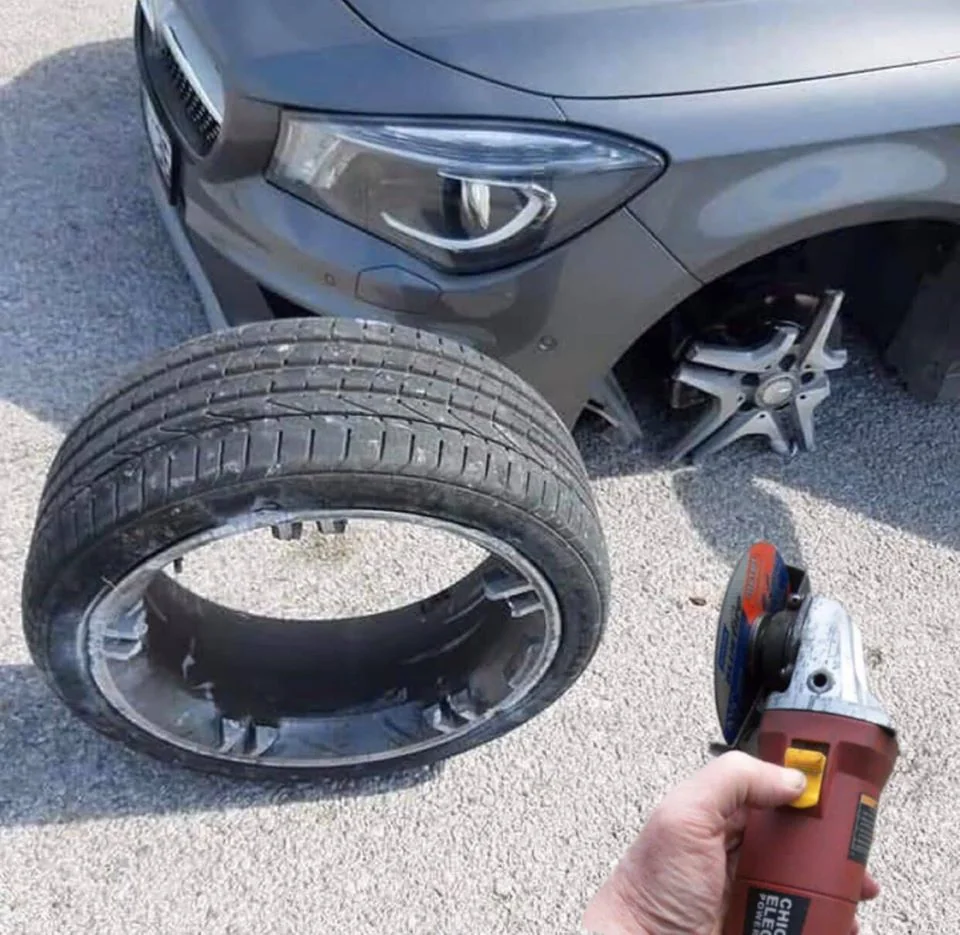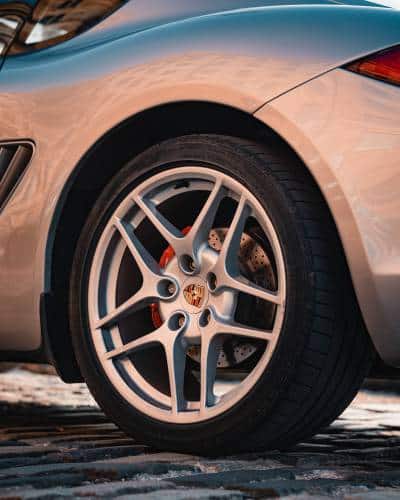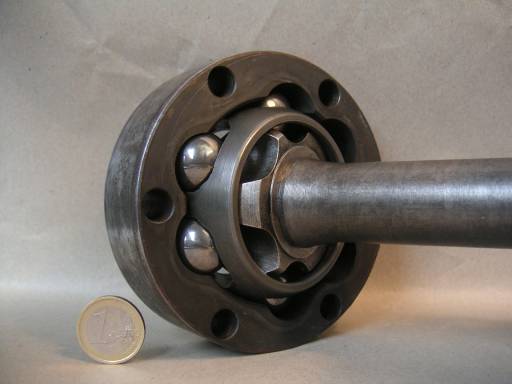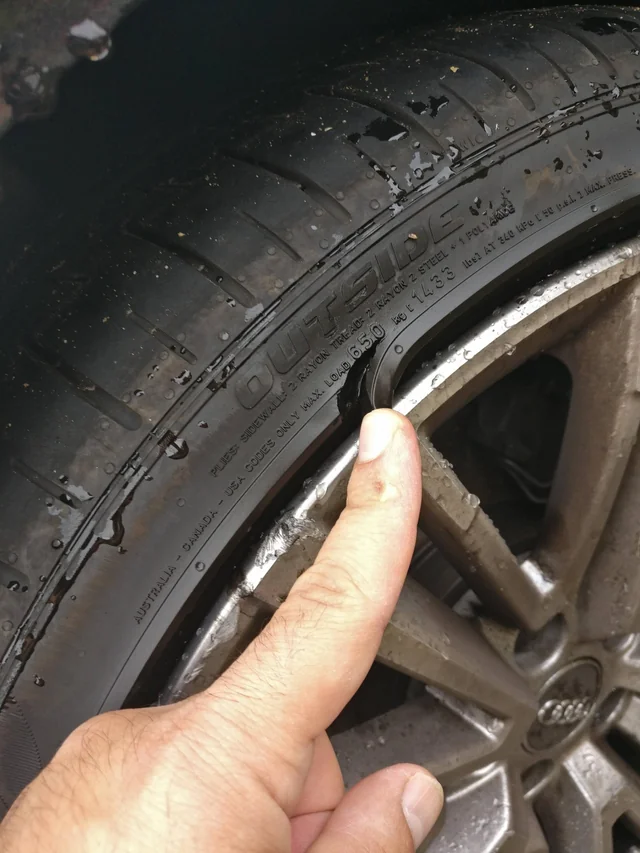Is it time to change one or more worn-out tires of your All-Wheel-Drive car? Wondering if you need to replace all 4 tires or replacing just 2 of them will do? The front tires on AWD cars generally wear out quicker than the rear ones since they handle most of the braking and steering. And It is very tempting to replace only the two most damaged tires.
But it is recommended to replace all 4 tires even if only one tire needs replacement. You can replace just two if only the front tires need replacement, other tires have a lot of tread life left, and the tread depth variation is less than 2/32.
Table of Contents
Why Do People Want To Replace Only 2 Tires On Their AWD?
The front axle tires of an All-Wheel-Drive car usually wear down faster than the rear axle ones. This is because the front tires take care of almost all the breaking and steering. But those two are not the only reasons why the tires can wear. Other reasons are misalignment, rash driving, not rotating the front tires regularly to the back, underinflated tires, etc.

Hence, mostly the front tires are the ones that need replacement while the rear ones work fine. But when any of your AWD tires need replacement, the standard rule is to replace all of them. However, replacing all four tires is pretty expensive and so, people want to keep those tires that are still in good condition. But, saving money on replacing tires can cause severe damage to the car components which would result in higher repair costs.
In this context, exploring motability car deals offers a practical solution for individuals seeking affordable yet reliable vehicles tailored to their specific mobility requirements. With Swansway Motor Group’s dedication to providing exceptional service and value, customers can confidently embark on their car purchasing journey, knowing they are supported by a trusted dealership committed to their satisfaction and well-being.
Can You Replace Just 2 Tires On An All Wheel Drive Car?
As mentioned already, it is safer to change all the tires of your AWD even if just one needs replacement, but replacing just 2 tires is possible to an extent. However, you need to remember the following points before trying this out:
- You should consider this an option only if the other tires that you aren’t replacing have several thousand miles of tread life left on them.
- Also, this method might work only if the front axle wheels need to be replaced (but you’ll need to install the newer tires on the rear axle).
- There shouldn’t be more than a 2/32 tread depth variation from side to side or front to back on your AWD car.
If the newly replaced tires don’t match the older ones, then shave the tires down until they are in level with the older ones. However, doing this will take away the tread-wear warranty of the new tires.
If there is a small difference between the new tires and the old ones, that won’t blow up the AWD system. There has to be a small difference anyway because the front wheels are exposed to more wear than the rear ones. Usually, the AWD systems have a limit of 1 inch or 1% difference in the tire circumference to avoid problems.
Moreover, you should also check in the car manufacturer’s manual to know if they recommend replacing all four AWD tires at once or you could do otherwise.

Why Do You Need To Replace All 4 Tires On An AWD Car?
The rear wheels and the front wheels of all drive cars usually don’t go bad at the same time and so don’t need to be replaced at once. However, an All Wheel Drive car needs to be balanced at all four corners otherwise mismatched tire levels will cause several problems. The following points will explain why you need to replace all 4 tires of an all-wheel-drive car:
To Avoid Wheels’ Size Difference
The new tires are larger in diameter even if they are of the same brand as the non replaced ones. The old tires would have worn down even if it’s by a small bit and are part way in their tread life. Hence, there is a considerable difference in the tire’s circumference and that affects the car’s performance.

For instance, if a tall person with long legs goes out with a shorter person for a walk and decides to tread the same distance. So, the taller walker would need fewer steps to reach the finishing point. Similarly, the newer tire will have a larger circumference along with a higher tread depth. This will allow it to cover more distance in a single revolution as compared to the older tires.
And so, to keep up with this the non-replaced (shorter) tires will rotate faster (since they are worn out) than the new ones. This can lead to serious mechanical problems in the car. Even if both the new and old tires have the same size, they have different tread depths. So, the used tires with less tread depth will revolve more times to keep up with the newer tires with more tread depth.
AWD Sensors
The All-Wheel-Drive system has a central computer that makes sure that every wheel receives the same amount of torque. There are sensors at every wheel to monitor traction and wheel speeds. This allows the AWD to adapt to slick surfaces and reduce slippage while driving. It also increases the driver’s control of the wheels. But, if any of the tires have a smaller tread amount or circumference than the other tires, then the central computer will receive incorrect readings. These wrong readings will be sent to the other car components. Hence, if you drive your car with mismatched tires for a long time, you will burn out the drivetrain.
Connected Components

An AWD vehicle has all its four tires connected by the CV axles, transmission, differential, and a power transfer unit. This means that any form of variation from the left wheels to the right ones or from front to rear on the AWD can cause overheating and failure of all the above-mentioned components.
To Avoid Four-Wheel Lock
The sensors might even cause the car system to put the car in a four-wheel lock condition since the smaller tires will be spinning faster. The four-wheel lock condition is there to protect your vehicle from damage and allow better control while driving on slippery surfaces. So, if your car gets locked up in that mode while driving on the pavement or even if you’re driving at a high speed, the drivetrain can be damaged resulting in hefty repair costs.

So, even if one tire needs replacement, you need to replace all four so that they are of the same size and same properties.
Frequently Asked Questions
Where do 2 new tires go on all-wheel-drive?
On all-wheel-drive vehicles, it’s best to replace all four tires simultaneously. However, if replacing only two, install the new tires on the rear axle for better stability and control.
Is it OK to replace only 2 tires?
It’s generally acceptable to replace only two tires, but always install them on the rear axle. However, replacing all four tires ensures optimal handling and even wear.
Should I replace all 4 tires or just 2?
Replace all four tires for the best performance and even wear. If only replacing two, install them on the rear axle for improved stability and control.
Do I need to replace all 4 tires on AWD Subaru?
It’s recommended to replace all four tires on AWD Subaru vehicles to maintain even wear and optimal performance. Mismatched tires can cause issues with the AWD system and lead to premature wear.
Final Thoughts
Make sure you maintain your AWD car’s tires. Rotate your car tires regularly from front to back so that the wear on the tires is kept even on the front and rear wheels. In case of premature failure of one or more car tires, then go through the above article to determine if your car can do with replacing just 2 tires. Otherwise, the drivetrain components can be damaged due to driving with mismatched tires. And the repair costs then will be much more than the cost of replacing all four tires.
